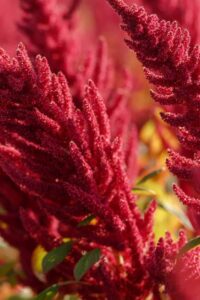
- Dt.inderjit.walia@gmail.com
- +91 89308-32001
Menu
Ragi, also known as finger millet (Eleusine coracana L.), is widely grown in India. This millet, known as Koracan in Sri Lanka and by many names in Africa, has long been a staple grain in eastern and central Africa, as well as India. In India, finger millet was traditionally processed through grinding, malting, and fermentation to make drinks, porridges, idli (steamed cake), dosa (pancake), and roti. Finger millet, one of India’s oldest crops, is known as “nrttakondaka” in ancient Sanskrit literature, meaning “dancing grain.” It has also been referred to as “rajika” or “markataka”. Finger millet was first recorded around 2300 BC in Hallur, Karnataka, India. Finger millet may have arrived in India via sea from Arabia or South Africa, or by crossing the Indian Ocean in both directions. Finger millet, also known as “umi” in Bihar and “nachni” in Maharashtra, was a common domesticated plant in India’s various states. Finger millet has high levels of carbohydrates, including free sugars (1.04%), starch (65.5%), and non-starchy polysaccharides or dietary fiber (11.5%). Wankhede et al. (1979a) found 59.5–61.2% starch, 6.2–7.2% pentosans, 1.4–1.8% cellulose, and 0.04-0.6% lignins in several finger millet cultivars. Finger millet has significantly greater fiber content (11.5%) than brown rice, polished rice, and other millets like foxtail, tiny, kodo, and barnyard millet. Finger millet is high in calcium (344 mg %), phosphorus (283 mg%), iron (3.9 mg%), and several trace minerals and vitamins. Finger millet has a higher potassium level (408 mg%) than other cereals and millets.
Kingdom: Plantae
Order: Poales
Family: Poaceae
Genus: Eleusine
Species: coracana

